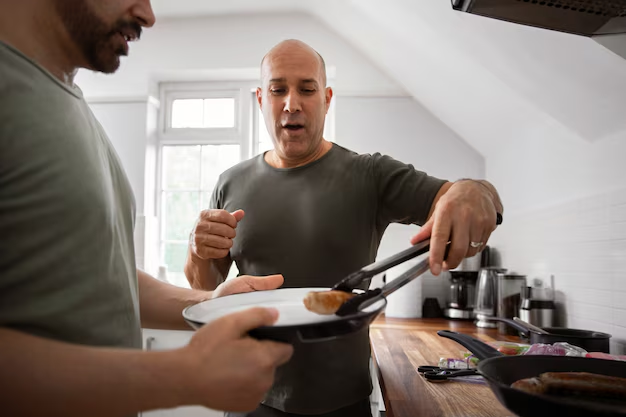Perfectly Balance Your GE French Door Refrigerator: A Comprehensive Guide
A GE French Door Refrigerator is more than just an appliance; it’s the centerpiece of your kitchen, housing fresh produce, chilled beverages, and delectable leftovers. However, even the most stylish kitchen staple won't do you any favors if it's improperly balanced. The significance of having a perfectly leveled refrigerator goes beyond aesthetics—it's crucial for optimal performance and longevity. Let's delve into how you can level your GE French Door Refrigerator to perfection.
🛠️ Why Leveling Your Refrigerator is Crucial
Leveling your refrigerator ensures that the doors close properly, prevents strain on the compressor, extends the appliance’s lifespan, and maximizes energy efficiency. But that's just the beginning; understanding these aspects will empower you to maintain an efficient kitchen companion.
Door Alignment and Seal Integrity
When a refrigerator isn’t leveled correctly, doors might fail to seal properly, leading to cool air escaping and warm air infiltrating. This not only affects the internal temperature but can increase electricity usage and even spoil your foods faster.
Compressor Strain
An uneven fridge can result in undue stress on the compressor. This strain often translates into noise, inefficiency, and eventually, reduced lifespan. Proper leveling mitigates these issues, allowing your compressor to function smoothly.
Aesthetic and Functional Alignment
A properly leveled refrigerator stands as it should, complementing your kitchen setup. Functionally, drawers and shelves will slide without obstruction, providing ease and convenience.
🛠️ How to Level Your GE French Door Refrigerator
The process of leveling your refrigerator is straightforward but requires precision. Here's a step-by-step guide to ensure your appliance stands perfectly balanced:
Tools You Will Need
- Carpenter's Level: Essential for checking horizontal and vertical alignment.
- Adjustable Wrench or Pliers: Useful for adjusting the leveling feet.
- Measuring Tape: Ensures the even spacing required around the refrigerator.
- Helper: Some steps might require an extra pair of hands.
Step-by-Step Guide
1. Unplug the Refrigerator
Safety should always be your first step. Unplugging ensures no power flows through the appliance during the leveling process.
2. Clear the Contents
Lighten the refrigerator by removing items. This not only decreases weight but provides access to internal surfaces where adjustments are noticeable.
3. Position the Carpenter's Level
Place the carpenter’s level along the top edge and sides of the refrigerator to gauge its current level. This step helps identify which side needs adjustment.
4. Access the Leveling Feet
Most GE French Door Refrigerators are equipped with adjustable front legs or rollers:
- Carefully tilt the appliance slightly backward if necessary.
- Locate the leveling legs beneath the front.
5. Adjust the Feet
- Use an adjustable wrench to turn the leveling legs.
- Righty-tighty, lefty-loosy: Turn clockwise to raise the fridge and counter-clockwise to lower it.
Keep adjusting until the carpenter's level shows equal bubbles horizontally and vertically.
6. Double-Check the Balance
Check again with the level after adjusting one side or foot. Re-assess the level along both the front and sides. Continue adjustments as needed.
7. Secure the Position
Once the refrigerator is level, ensure the feet are firmly on the ground. If your model has locking nuts on the leveling feet, tighten them with a wrench to secure their position.
8. Plug Back and Restock
Finally, plug your refrigerator back in and reintroduce stored items.
Helpful Tips for Leveling
- Check Bi-Annually: Floors settle, and it's wise to double-check your refrigerator's level every few months.
- Consider the Sloped Floor: If floors are sloped, further adjustments may be necessary.
- Listen for Changes: If new noises develop post-leveling, double-check the feet for firmness and balance.
🛠️ Common Challenges in Leveling
Being prepared for potential complications can make the process smoother. Here are common challenges:
Uneven Floors
Homes aren’t always flawless, and sometimes floors are inherently uneven. Shimmy-adjusting with wood or metal pieces can help stabilize your refrigerator correctly on imperfect surfaces.
Worn or Stuck Leveling Legs
Older appliances may feature worn-down leveling legs that may not adjust easily. Applying a lubricant sparingly or replacing these parts could be necessary.
Tight Spaces
Confined kitchens make maneuverability tough. Recruiting aid or carefully measuring movements can assist in working in these compact conditions.
🤔 What Happens If Your Refrigerator Isn't Level?
Leaving a refrigerator unbalanced not only affects its mechanical aspects but also the freshness and shelf life of stored items. Here are implications of an uneven appliance:
- Inconsistent Cooling: Foods may not chill evenly, promoting uneven spoilage.
- Increased Energy Usage: The compressor works harder, thus consuming more power.
- Storage Impacts: Sliding or misaligned drawers and hard-to-operate doors hinder user convenience.
📝 Key Takeaways
To wrap up your leveling endeavor, here’s a roundup of essentials:
- Safety First: Always unplug your appliance before adjusting.
- Invest in Tools: A carpenter's level and adjustable wrench are invaluable.
- Regular Checks: Regularly inspect and adjust to accommodate floor shifts.
- Balanced Doors are Efficient Doors: Proper door seals save energy and keep food fresh.
📄 Quick-Reference Summary
Here's a skimmable breakdown of steps and tips to keep in mind:
- 🔌 Unplug your refrigerator for safety.
- 🛠️ Use a level and adjust feet with a wrench.
- ↔️ Check both horizontal and vertical balance.
- 🔁 Repeat and secure; re-assess regularly.
Leveling your GE French Door Refrigerator isn’t just mechanics; it's a vital step for preserving functionality and efficiency. By ensuring its proper balance, you directly influence its performance and lifespan, leading to a more harmonious, energy-efficient kitchen experience. Consider making this routine a memorable part of your maintenance schedule, ensuring your GE appliance remains a reliable kitchen ally.
